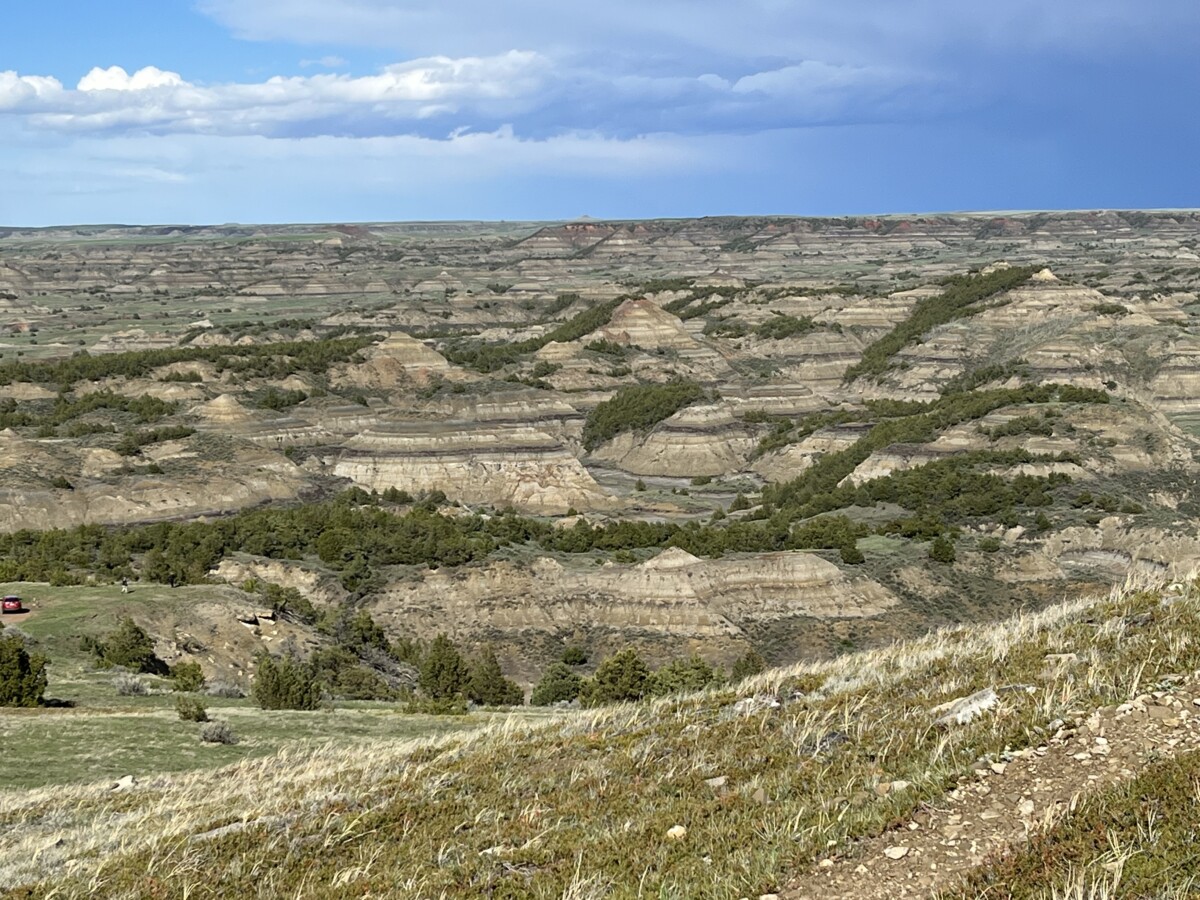While on our vacation to the Black Hills, we made an overnight detour to North Dakota. After all, we were nearby — relatively speaking. Plus I didn’t want North Dakota to be our 50th state as it is for many travelers. Surely, there’s something to see in our country’s least visited state?
Fortunately, Theodore Roosevelt National Park (TRNP) sits on land that President Teddy Roosevelt owned when he ran two cattle ranches in North Dakota after losing his wife and mother in 1884. The park, which gained national park status in 1978, consists of 70,000 acres in the North Unit, South Unit, and Elkhorn Ranch Unit. Part One covered our half-day visit to the North Unit while this post covers the afternoon visit to the South Unit.
TRNP’s South Unit
TRNP’s South Unit is the most visited area of the park as it sits in the gateway town of Medora along Interstate 94 in North Dakota. Medora is best described as a western town in the middle of nowhere and we really did feel we were on the edge of the world.
TRNP Visitor Center and Maltese Cross Cabin
Fees to enter TRNP are $30 for a seven-day vehicle pass or free with the annual “America The Beautiful” National Park Pass. Compared to the North Unit, the South Unit bustled with activity. We entered the visitor center, watched a film about the park, and toured the small museum.
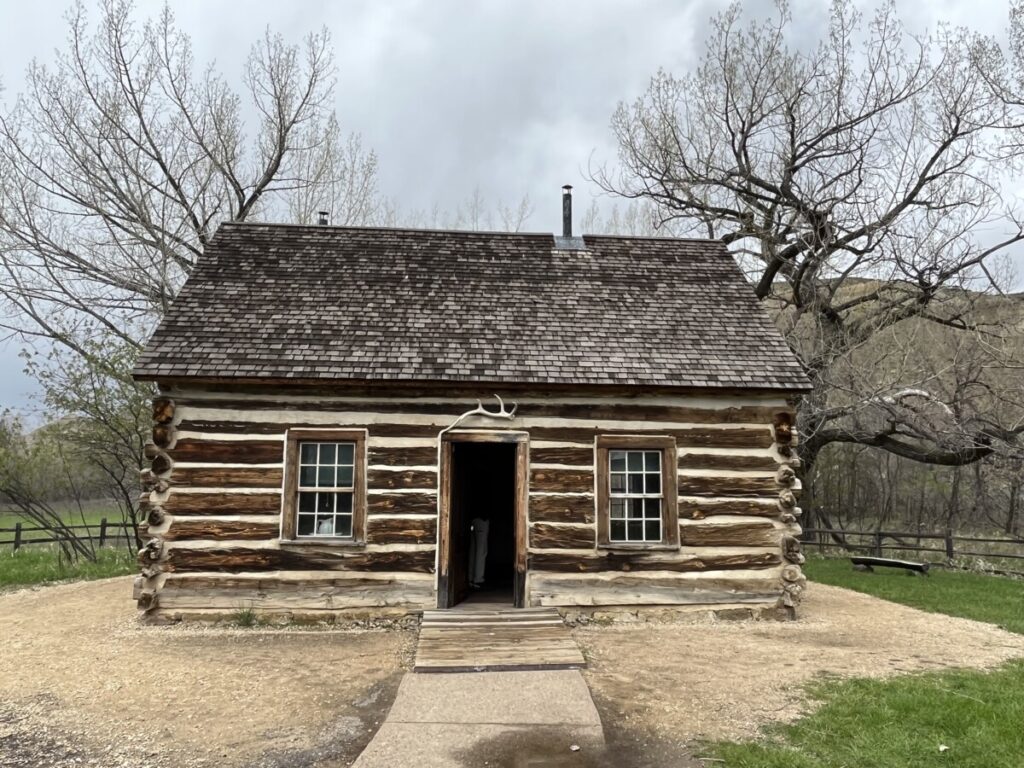
Just outside the visitor center sat Teddy Roosevelt’s Maltese Cross Cabin. While it looked small to me, the three-room cabin, built out of ponderosa pine, was considered large by North Dakota standards at the time. The cabin originally sat on Roosevelt’s Chimney Butte Ranch, seven miles away. Due to its historical significance, the cabin traveled to the 1904 World’s Fair in St. Louis and the 1905 Lewis and Clark Centennial Exhibition in Oregon. After standing at the North Dakota capital grounds in Bismarck for many years, the cabin returned to the park in 1959.


Scenic Loop
The best way to explore TRNP is via the 36-mile scenic loop. However, the park service closed a four-mile stretch at mile marker 24 in 2019 due to erosion. Instead of driving a 90-minute loop, visitors today drive a 48-mile out and back road.
The scenic drive offers plenty of pullouts and scenic spots. We passed by a prairie dog village and then drove up a hill where wild horses greeted us.
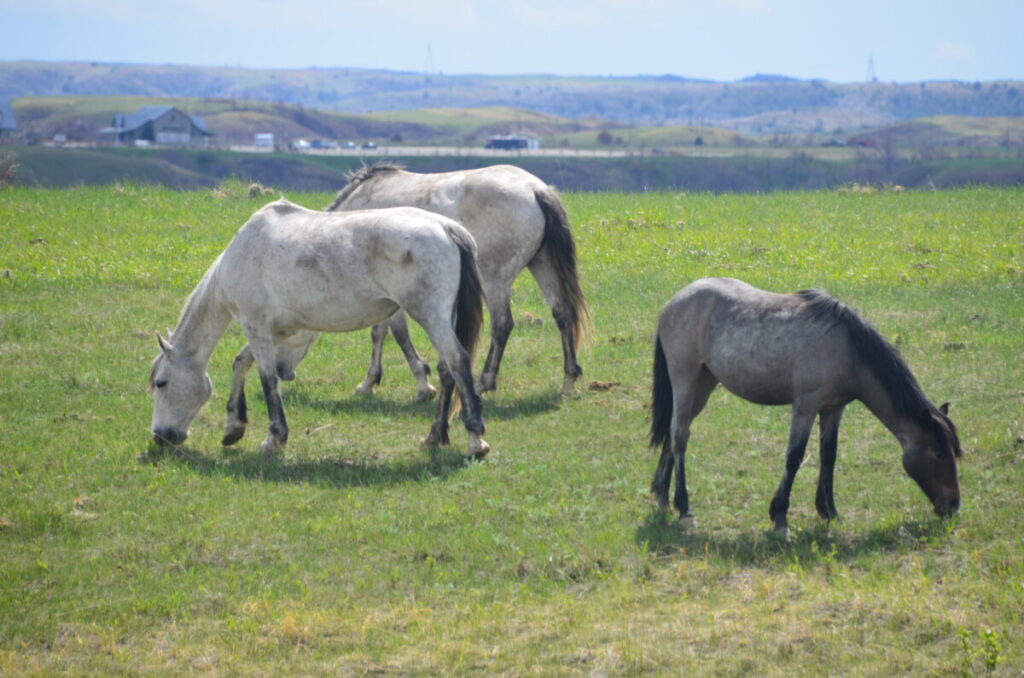
Wind Canyon Trail
We got out of the car at the Wind Canyon Trail. While only 0.4-mile in length, the trail climbs up a flight of stairs leading to panoramic views of the Little Missouri River.
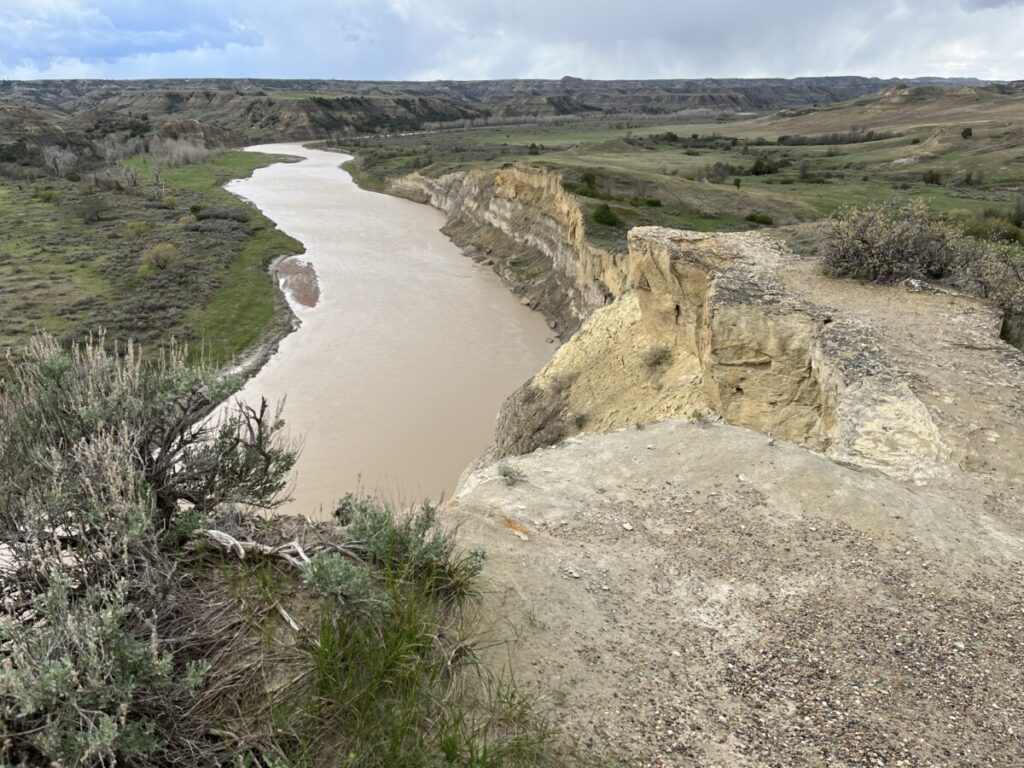
Rated one of the best hikes in the entire state, the Wind Canyon Trail lived up to its reputation with amazing views of the Little Missouri River. And true to its name, the wind blew fiercely as we walked single file along the ridge.
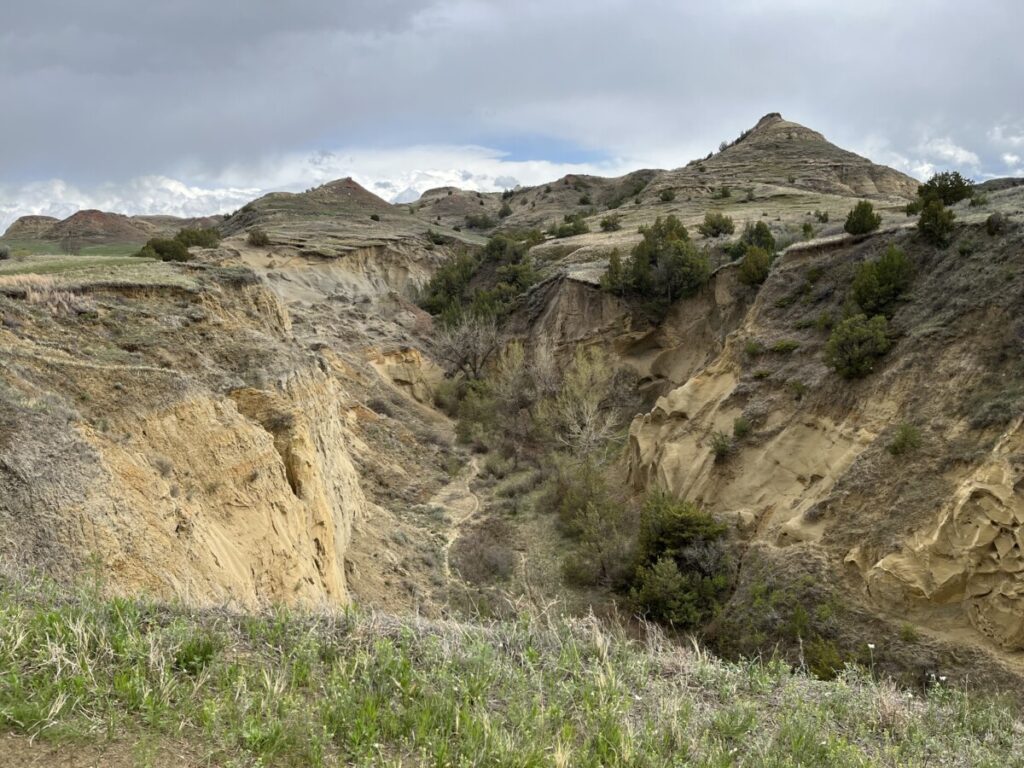
It wasn’t until we headed back to the car that I saw the canyon carved by the wind, not rain. While this was our favorite hike in the South Unit, I bet it would be more spectacular at sunset.
Badlands Overlook
Back on the Scenic Loop, a thunderstorm, complete with hail, came down. By the time we got to Badlands Overlook, the rain abated and the sun came out – lighting up the rock formations in the distance.
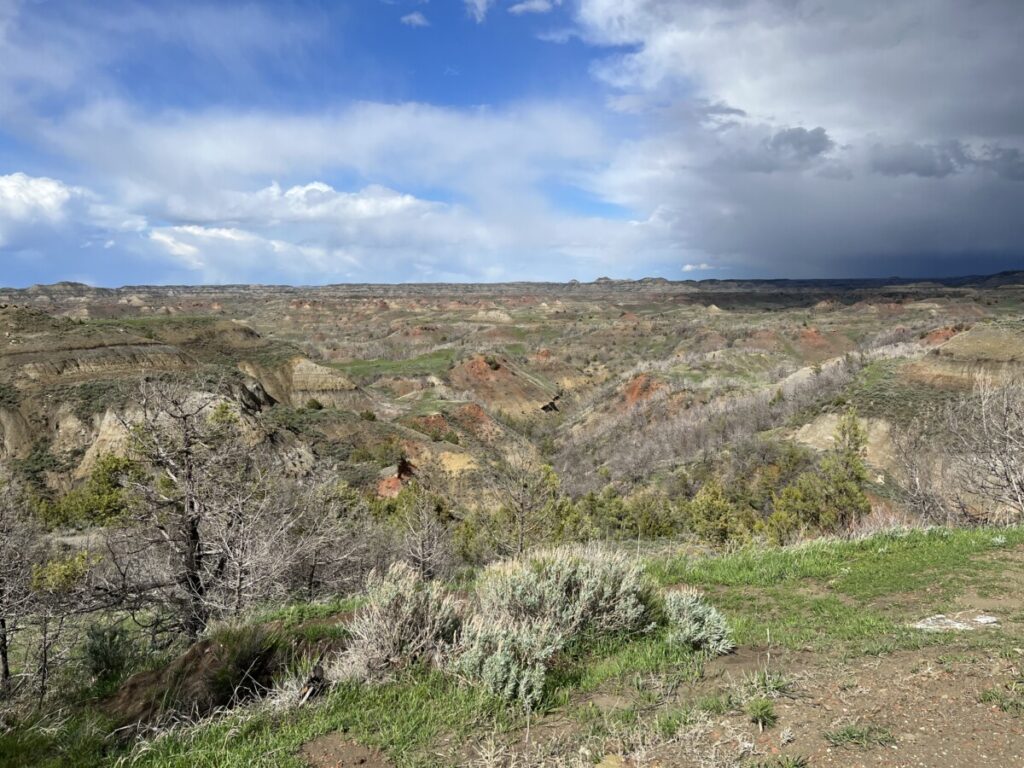
At this point, the scenic road ended and we turned around. Since we now had sunshine, we made a quick stop at Buck Hill, taking the 0.3-mile hike to the second-highest point in the park.
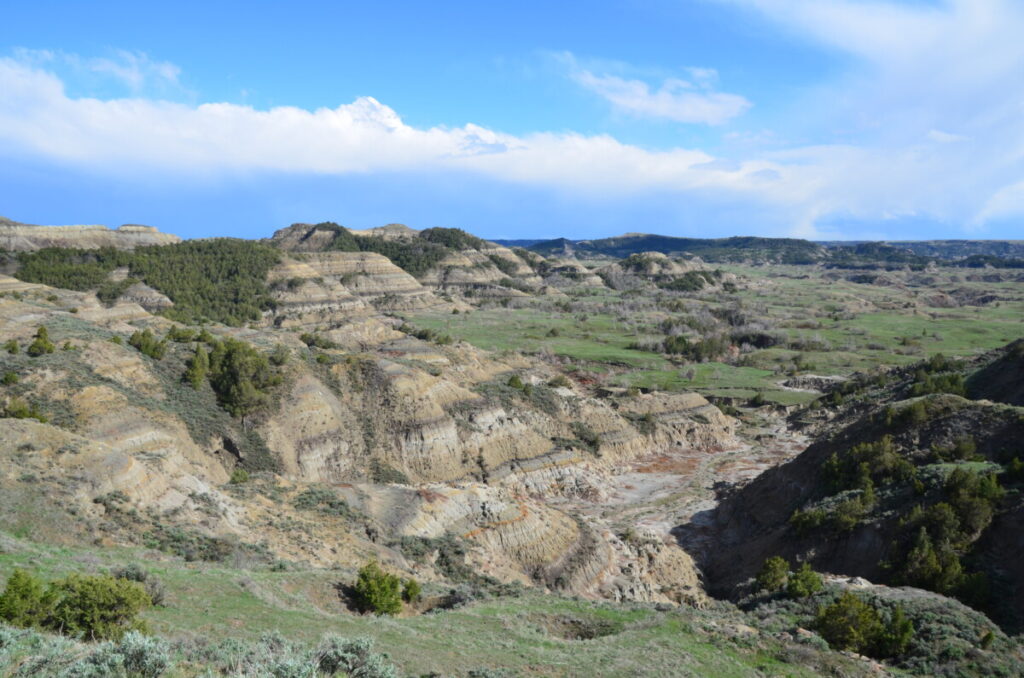
We also stopped at Boicourt Overlook and walked on the paved trail for more views of the Badlands. Going back to the car, we noticed bison really close by. We quickly got in the car before taking some neat up close pictures!
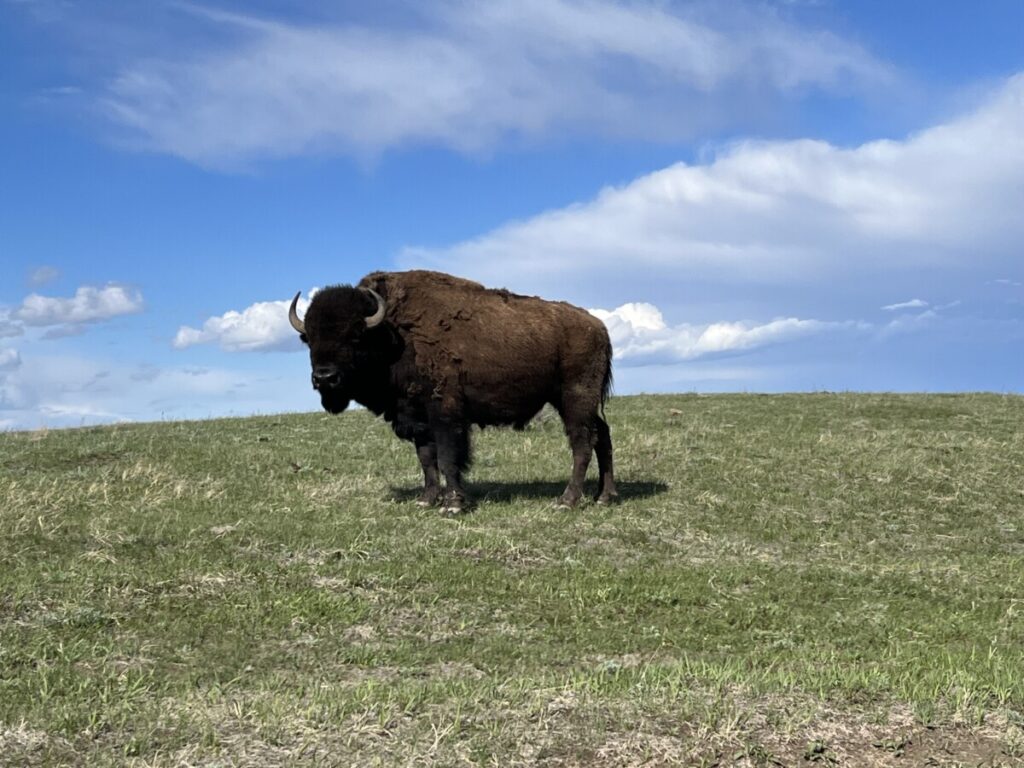
Conclusion
We had over a four-hour drive back to our cabin in Hill City, South Dakota. Although the map showed several towns along the route, we didn’t find much in the way of restaurants until Belle Fourche, which is the geographic center of the US.
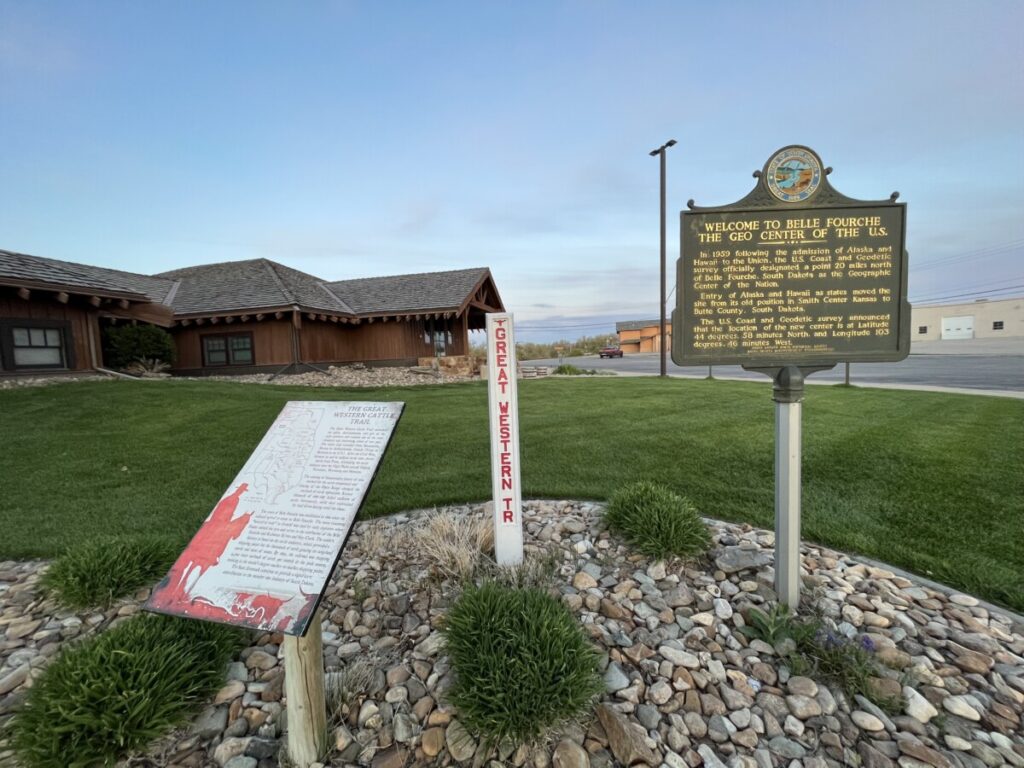
Was it worth it to make a detour to North Dakota? Absolutely! TRNP’s badlands are different (more colorful) than Badlands National Park. Plus we saw more wildlife including wild horses.
Hindsight is 20/20. Had we known half of the main road in TRNP’s North Unit was closed due to rains, we would have spent our entire day in the South Unit and taken a few longer hikes. According to many, we missed the best parts of the North Unit because of the road closure.
For more information about the park, click the National Park Service website here.
